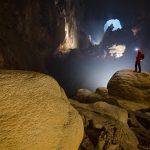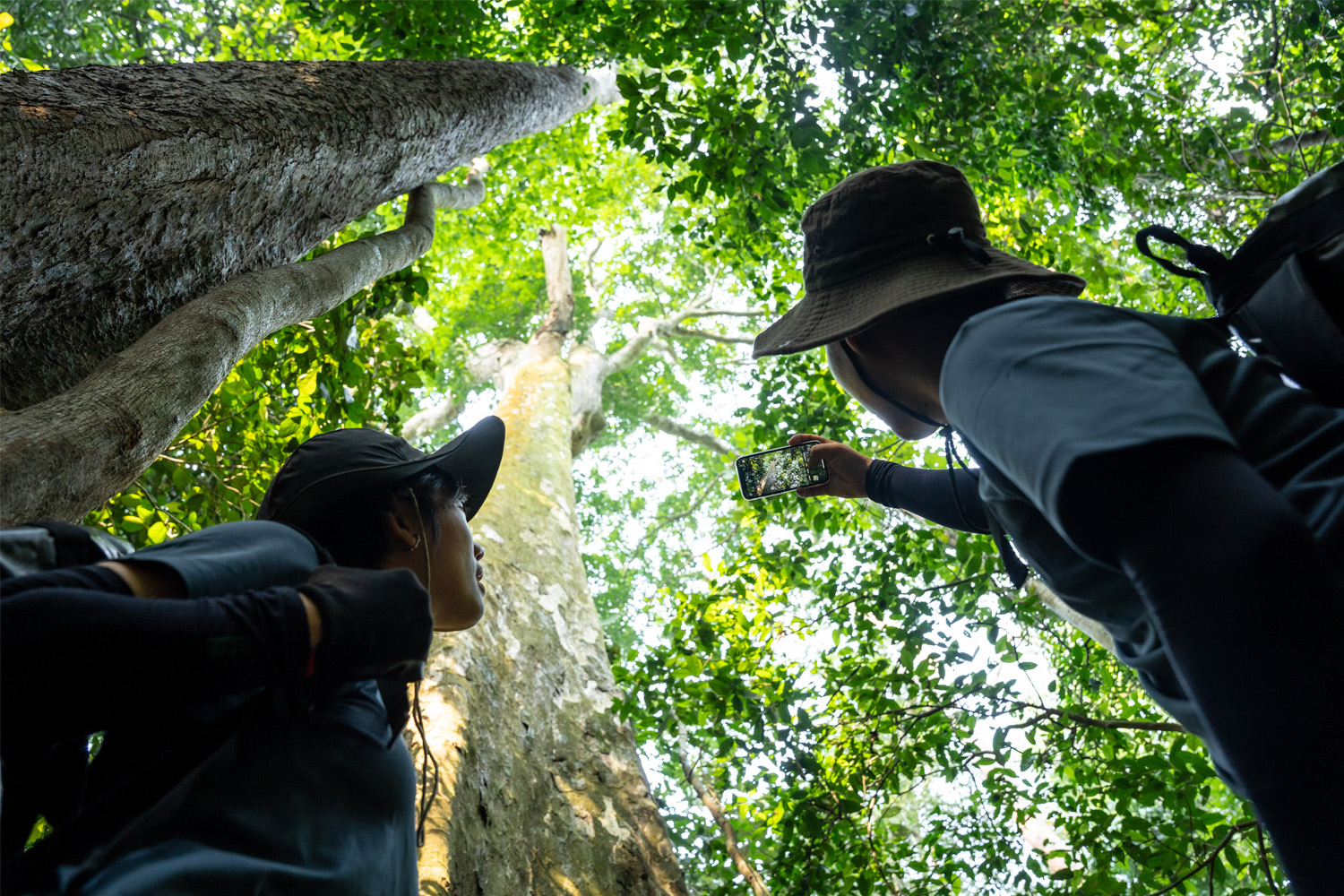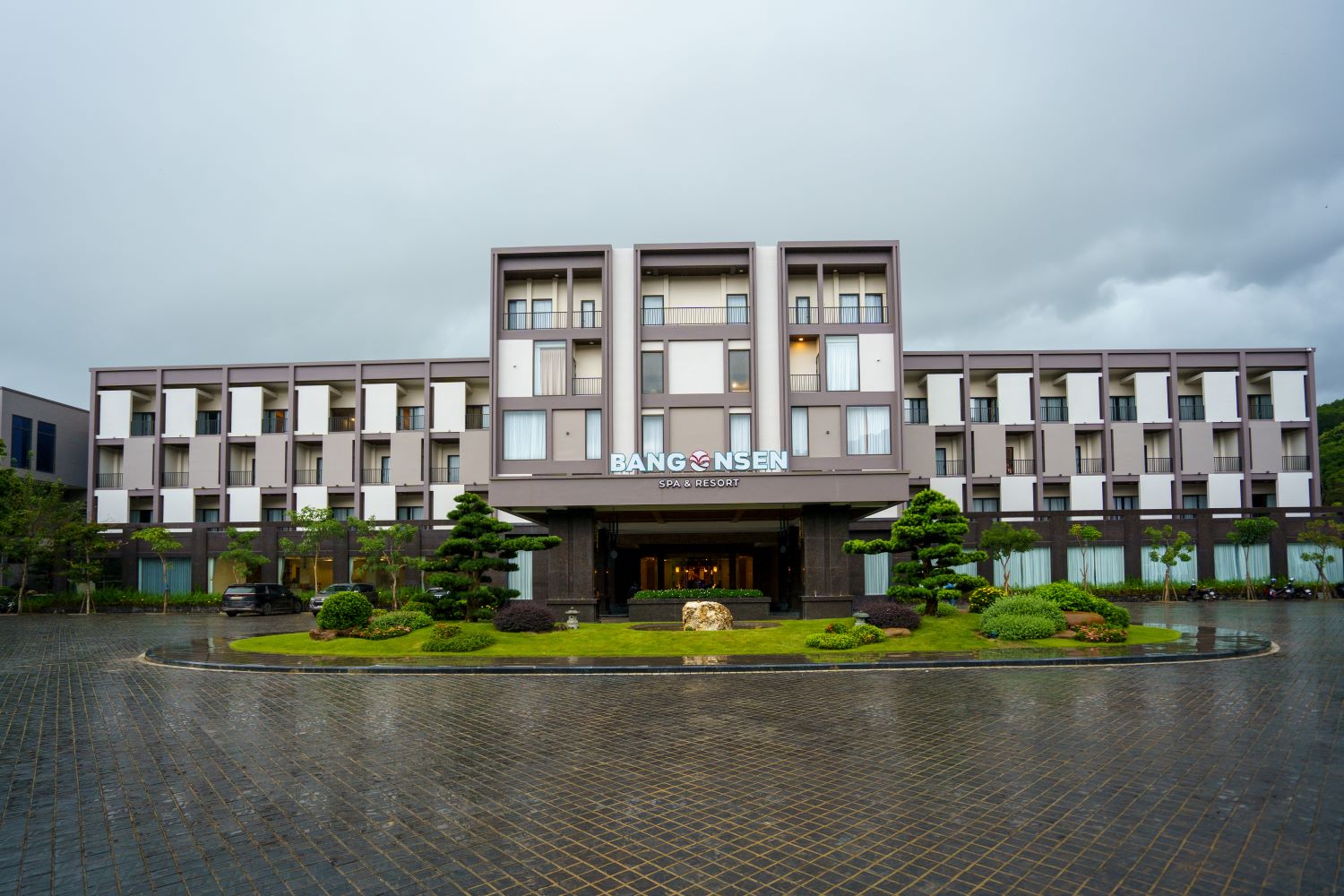A museum is a cultural and educational establishment that plays a crucial role in preserving and promoting local heritage. It serves as an archive of historical evidence, symbols of human creativity, and meaningful stories. Quang Binh Museum is no exception. If you wish to explore the history and culture of Quang Binh Province in depth, this museum is the perfect destination. More than just a place to display artifacts, Quang Binh Museum is a vibrant cultural space where the past comes to life.

Where is Quang Binh Museum?
Located on Hung Vuong Street in Dong Hai Ward, right in the heart of Dong Hoi City, Quang Binh Museum enjoys a prime location, with National Route 1 (QL1A) at the front. Visitors can easily reach the museum by various means of transportation, including self-driving or using taxi services, both of which are highly convenient. One important note is that due to the extensive collection of artifacts and the large exhibition space, a full visit to the museum can take up to 4 hours.
Surrounding Quang Binh Museum, visitors can explore several other notable attractions in the area. Nearby, you will find Ho Chi Minh Square and the Monument of Mother Suot. A short drive away is Nhat Le Beach, where you can relax on the stunning shoreline and savor fresh seafood at local seaside restaurants.
Opening hours
Quang Binh Museum is open from 8:00 AM to 11:00 AM in the morning and from 1:30 PM to 4:30 PM in the afternoon, every day of the week, including holidays.
Entrance fees
Entry to Quang Binh Museum is free, allowing visitors to explore the region’s unique cultural and historical heritage without any cost concerns.
History of Quang Binh Museum
Established in 1976, Quang Binh Museum is one of the first museums in Vietnam. According to Dr. Nguyen Khac Thai, a historian specializing in Quang Binh’s history, Quang Binh Museum could have dated back to the 1960s. The museum houses a vast and diverse collection of artifacts, including rare relics from the Can Vuong Movement, led by Emperor Ham Nghi, which are of exceptional historical significance.
The museum’s history can be divided into 2 key phases:
- 1976–2003: Quang Binh Museum was initially formed by merging exhibitions from cultural, historical, and artistic institutions in Quang Binh. During this period, the museum displayed over 2,000 artifacts, documents, and materials covering the province’s history, culture, and art from prehistoric times to the present.
- 2003–present: A new museum was constructed inside Dong Hoi Citadel. The project commenced in 2003, costing 34 billion VND. The museum was inaugurated on April 30, 2019, and officially opened to visitors on May 1, 2019.
The role of Quang Binh Museum
Quang Binh Museum is a must-visit destination. Beyond preserving cultural heritage, it plays a vital role in showcasing and protecting the local identity.
If visitors wish to visit Quang Binh Museum, professional guides are available to help them discover and gain a deeper understanding of the valuable collections on display. These guides provide an engaging experience with insightful information about local culture and history. Recently, an increasing number of young people have shown interest in visiting Quang Binh Museum when traveling to Dong Hoi.
Quynh, a tourist visiting Quang Binh, shared: “On my last day in Quang Binh, I chose to visit the museum to reflect on and listen to the historical stories of Vietnam. The museum guide had a very captivating voice!”
Quang Binh Museum is not only a place that preserves valuable cultural heritage but also plays an important role in promoting sustainable development in the region. It is a key destination where visitors can explore, understand, and contribute to the preservation and development of the local community. Moreover, by focusing on the conservation and promotion of cultural heritage, Quang Binh Museum helps maintain traditional values and builds a strong foundation for future growth.
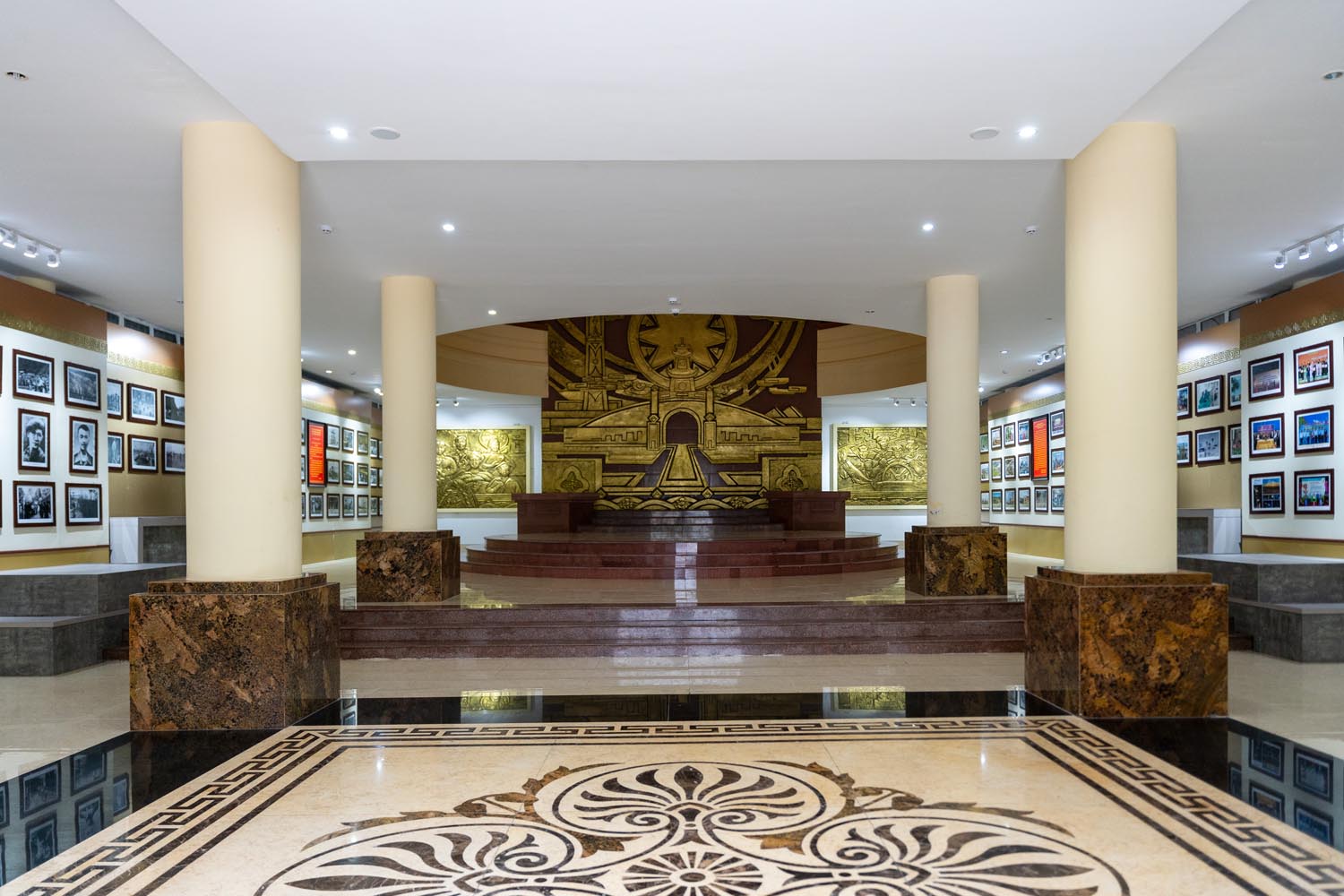
Floor plans of Quang Binh Museum
Quang Binh Museum covers a total area of 2,500 square meters, with 2,000 square meters dedicated to exhibitions. The museum houses over 15,000 artifacts, documents, and materials that showcase the history, culture, and art of Quang Binh from prehistoric times to the present. The exhibits are arranged into 7 main thematic sections:
- Nature and Natural Resources of Quang Binh
- Ethnic Cultures of Quang Binh
- Quang Binh in Prehistoric and Champa Cultures
- Quang Binh from the 11th Century to 1945
- Quang Binh during the Anti-French War (1945–1954)
- Quang Binh during the Anti-American War (July 1954 – May 1975)
- Quang Binh during the Development and Renewal of Socialism
Quang Binh Museum is an essential stop for those interested in exploring the province’s history, culture, and artistic heritage. It plays a crucial role in educating future generations about patriotism and preserving the nation’s cultural identity.
Outdoor area
In the outdoor exhibition area, remnants of war, including bomb fragments from American air raids, aircraft wreckage, and metal debris from past conflicts, are preserved as evidence of the fierce battles for national liberation that the people of Quang Binh endured. Upon arrival at Quang Binh Museum, visitors will notice two aircraft displayed in the museum courtyard. These aircraft hold significant historical value, closely linked to the resistance war against the United States.
On the left, there is a Mig-17, a symbol of the heroic Vietnamese People’s Air Force. On the right, an AD-6 represents the United States Air Force. These two aircraft serve as powerful reminders of the resilience and bravery of the Vietnamese military and people during the war against American forces.
Additionally, the museum displays various transportation vehicles and combat weapons used by the people and military of Quang Binh.
- Tractor: This was the first tractor gifted by President Ho Chi Minh to Dai Phong Cooperative, a leading example of the cooperative movement in Quang Binh. It symbolizes the province’s agricultural development and modernization.
- Stone Steles: The museum houses a diverse collection of stone steles from different dynasties, including Ly, Tran, Le, and Nguyen. These steles document important historical and cultural events in Quang Binh.
- Racing Boats: The museum features two traditional racing boats, one for men and one for women. These boats were donated by the residents of An Xa Village, Loc Thuy Commune, Le Thuy District, in 2017 and 2018.
These artifacts add depth to the Quang Binh Museum, allowing visitors to gain a comprehensive understanding of the province’s history and cultural heritage.

First floor
The first floor of Quang Binh Museum is a diverse and rich space that showcases the unique aspects of the region’s nature, resources, and culture.
Nature and Natural Resources of Quang Binh:
The “Nature and Natural Resources of Quang Binh” section displays unique artifacts related to the province’s topography, geology, climate, and hydrology. Here, visitors can explore images and objects illustrating the formation of the region’s landscapes, along with valuable natural resources. The museum also highlights the rich biodiversity of Quang Binh, showcasing its unique flora and fauna.
Ethnic Cultures of Quang Binh:
The “Ethnic Cultures of Quang Binh” section preserves tangible and intangible cultural artifacts of the ethnic minority groups living in Quang Binh. Visitors have the opportunity to explore traditional clothing, musical instruments, dances, and other cultural elements that reflect the diversity and depth of these communities. The ethnic groups in Quang Binh have diverse origins and have formed over various historical periods. The Chut people, including the Ruc, May, Sach, Arem, and Ma Lieng subgroups, were among the earliest settlers in western Quang Binh.
These ethnic groups have retained many ancient cultural and linguistic traits from the Viet-Muong language group. Additionally, the Bru people migrated over the Truong Son mountain range into the forested areas of Quang Tri before moving to Quang Binh. Here, they are recognized as the Bru-Van Kieu, including subgroups speaking Mon-Khmer languages, such as Van Kieu, Tri, Khua, and Ma Coong.
On the first floor, visitors will also find a remarkable artifact – a calligraphy book about General Vo Nguyen Giap, which holds national and world Guinness records. On June 21, calligraphy artist Vo Duong donated the book, titled “The People’s General – Vo Nguyen Giap – The Years of His Life”, to the Quang Binh Museum for exhibition. This one-of-a-kind book was handwritten in Vietnamese calligraphy by Vo Duong, with its content based on the book, first republished in 2015 by Tre Publishing House.
A defining feature of the book is its massive size, measuring 2.04 meters in length, 1.36 meters in width, and 0.48 meters in height, with an estimated weight of 500 kilograms. The cover is made of Red Doussie wood, featuring a portrait of General Vo Nguyen Giap gilded with 24-carat gold. Inside, the book consists of 250 pages of five-layered canvas, bound with Japanese glue, and written in Chinese ink and acrylic paint. Interwoven throughout the book are 5 sculptures. Additionally, the museum has been gifted 3D tour software and equipment by the Ministry of Defense, providing an interactive experience about the life and career of General Vo Nguyen Giap.

Second floor
The second floor of Quang Binh Museum takes visitors on a journey through the history and unique culture. There are 2 main sections: “Quang Binh in Prehistoric and Champa Cultures” and “Quang Binh from the 11th Century to 1945.”
Quang Binh in Prehistoric and Champa Cultures:
This floor houses valuable artifacts related to the Sa Huynh culture, Dong Son culture, and Champa culture in Quang Binh. These are not just relics but symbols of the lives and traditions of early communities in the area. The statues, reliefs, and ceramics on display tell stories of ancient societies, showcasing the creativity and craftsmanship of the people who once lived here. These artifacts highlight the wonders of Champa culture in Quang Binh and its deep connection to the land and nature.
During its time as part of the Champa Kingdom, Quang Binh played a crucial role as the northernmost territory. The region’s architecture, fortifications, and artifacts reflect the advancements in technology, economy, society, and culture. The continuous development from prehistoric times through the Champa era laid a strong foundation for later historical progress in Quang Binh. Notably, French archaeologists discovered numerous Champa artifacts in the province, including bronze and sandstone sculptures of Avalokiteshvara, as well as inscriptions related to the Bodhisattva.
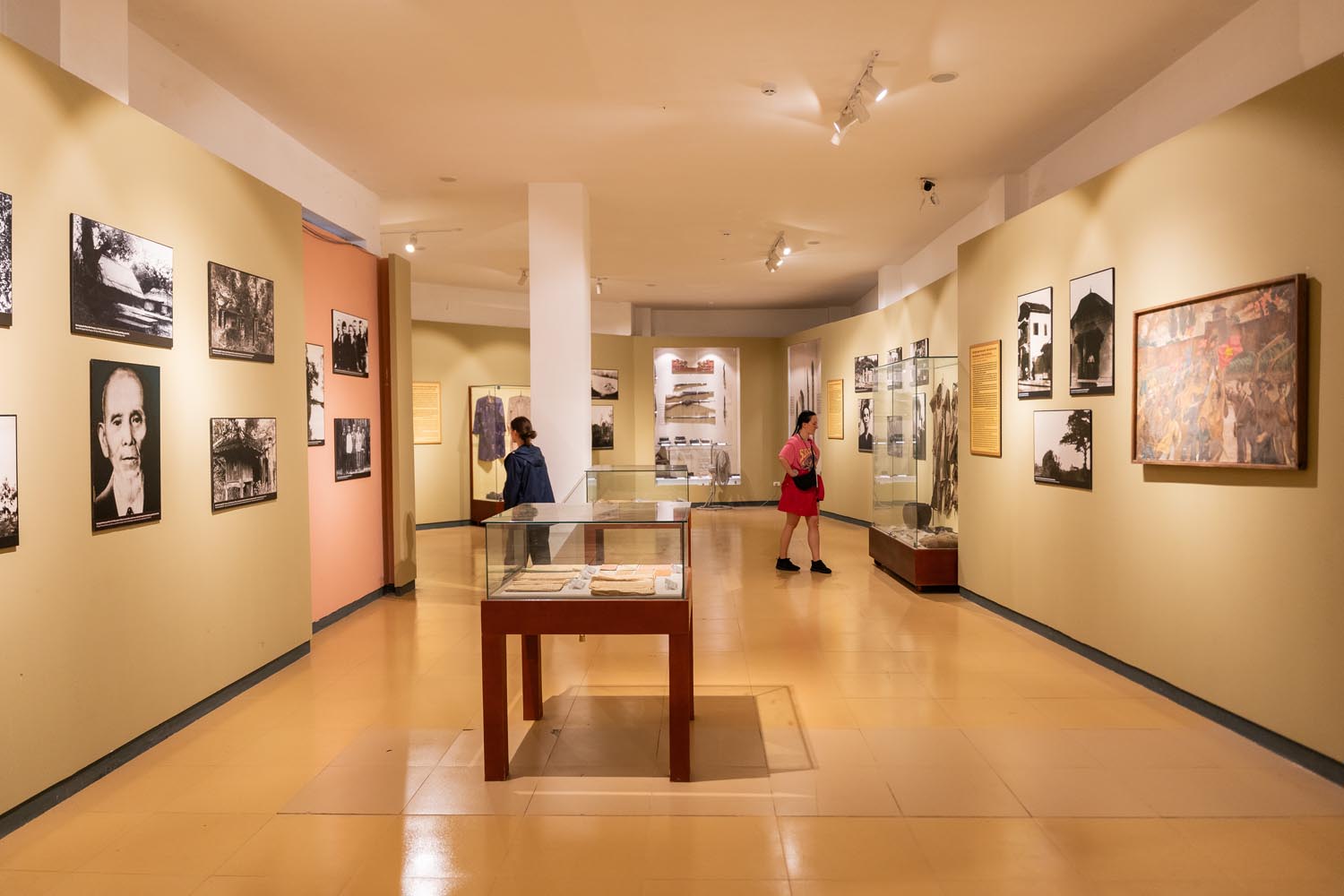
Quang Binh from the 11th Century to 1945:
On the second floor, visitors will be immersed in the history, culture, and arts of Quang Binh from the Ly Dynasty to the Nguyen Dynasty. The artifacts and exhibitions serve as a window into the daily life and development of this region through various historical periods. The collections include ceramics, earthenware, and porcelain categorized into the Ly-Tran collection, Le-Trinh collection, blue-glazed ceramics from the Nguyen Dynasty, My Cuong pottery collection, and lime pots from different periods.
This area also preserves information about the Ho Dynasty and Nguyen Dynasty citadels in Quang Binh, which are significant milestones in the province’s historical and cultural journey. Through these artifacts and displayed documents, visitors gain a deeper understanding of the unique characteristics and historical values of this land.

Third floor
The third floor of Quang Binh Museum is not just an exhibition space but also a profound journey into the region’s history and political movements. Each artifact and display contributes to the rich historical heritage of Vietnam.
Quang Binh during the Anti-French War (1945–1954):
This section showcases invaluable artifacts related to the Can Vuong movement, including weapons used by the insurgent army, items belonging to Can Vuong leaders and soldiers, and relics of the patriotic movement against French colonial rule in Quang Binh. It highlights the courageous struggle of the Vietnamese people against colonial domination and invasion. Visitors will also see artifacts commemorating the famous victories at Dong Loc and Ba Gia, which symbolize the sacrifices and determination of the people of Quang Binh during this resistance.
Quang Binh during the Anti-American War (July 1954 – May 1975)
The third floor also delves into the Dong Khoi movement and the historic victory in Dien Bien Phu. Quang Binh played a crucial role in these events, and the artifacts on display serve as powerful evidence of the unity and sacrifices made by its people in the fight against the United States. Additionally, visitors will learn about the province’s efforts to build socialism during this period.
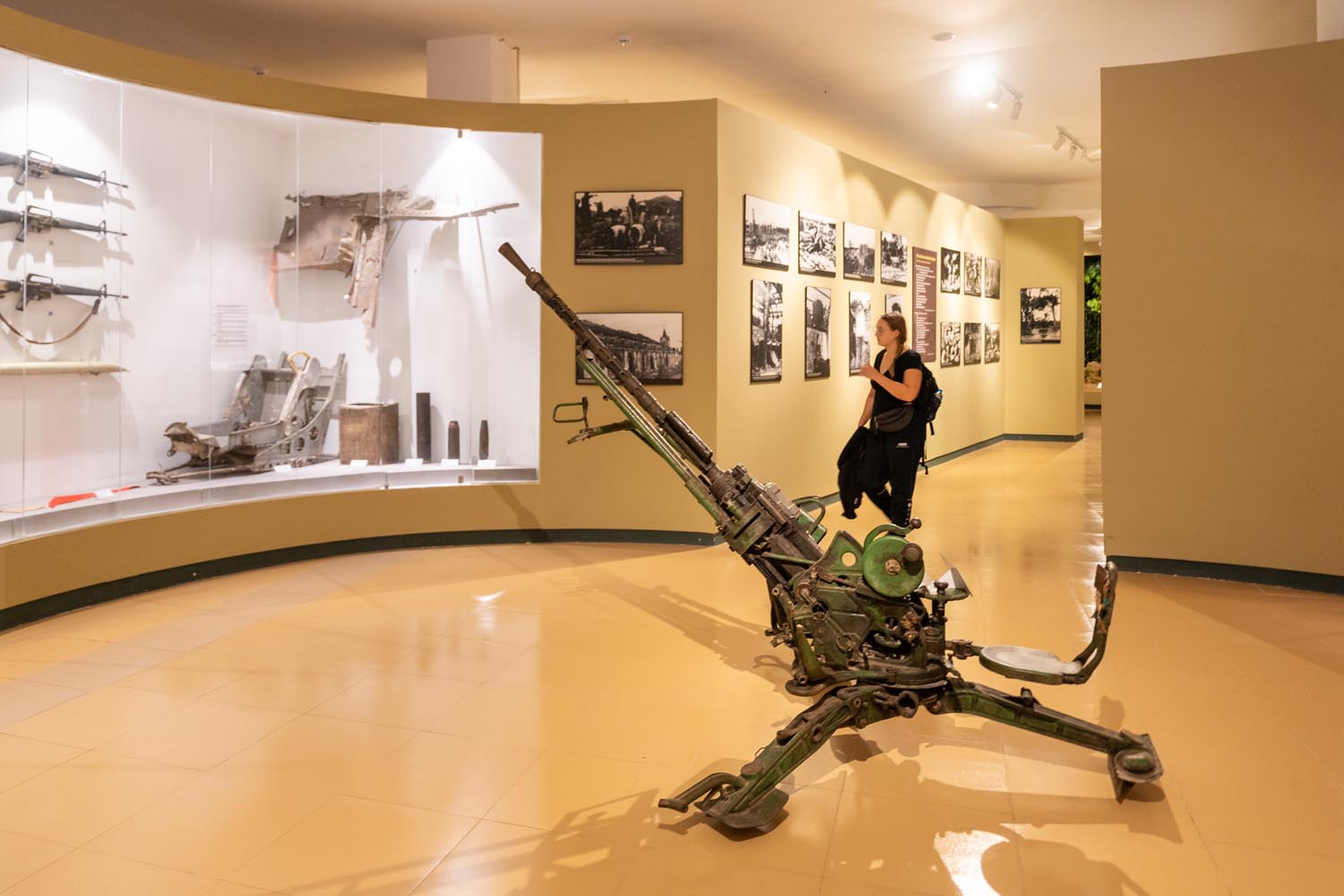
Quang Binh during the Development and Renewal of Socialism:
The exhibitions conclude with artifacts reflecting the province’s journey of economic and social development during the reform period. Visitors will explore the revolutionary changes in Quang Binh’s socialist construction and the achievements and challenges faced during this transformation. This section also features artifacts related to the province’s cultural heritage and tourism, illustrating the blend of cultural identity and urban development in the modern era.
What to see at Quang Binh Museum
Bau Tro Period artifacts
The Bau Tro cultural period is a significant archaeological era in Vietnam, discovered and studied in Bau Tro in Hai Ninh Commune, Quang Ninh District. The Bau Tro site dates back 7,000–7,500 years, belonging to the late Neolithic and early Metal Ages.
Quang Binh Museum currently exhibits more than 1,000 artifacts from the Bau Tro period, many of which are rare and representative of Bau Tro culture. These artifacts are displayed in the section on prehistoric and Champa culture on the second floor of the museum. They are arranged by themes and timelines, helping visitors gain a deeper understanding of the material and spiritual life of Bau Tro inhabitants. Some notable Bau Tro artifacts on display at Quang Binh Museum include:
- Tools: Axes, pickaxes, chisels, knives, etc., made from stone, bone, and horn. These tools were essential for production, hunting, and gathering.
- Pottery: Pots, jars, bowls, cups, and basins made of clay, decorated with simple patterns.
- Jewelry: Bracelets, earrings, rings, and beads made from stone, bone, and horn.
- Figurines: Human and animal figurines made from stone and clay, reflecting the spiritual life of Bau Tro inhabitants.

Dong Son Period artifacts
Quang Binh Museum houses an impressive collection of Dong Son culture artifacts, showcasing diverse types, styles, and materials. This collection not only highlights the advanced bronze-casting skills of the Dong Son people but also provides insight into their daily lives from 2,000 – 2,500 years ago. Over the years, the Dong Son collection at Quang Binh Museum has attracted researchers and students for study and analysis.
At Quang Binh Museum, visitors can admire various distinctive artifacts from the Dong Son cultural period. The collection features tools and jewelry commonly used in daily life, demonstrating exceptional craftsmanship in bronze production. Additionally, visitors will find unique items such as weapons like spears, jewelry, and small bronze figurines. Other displayed items include daggers, arrowheads, short swords, battle axes, and armor pieces used in warfare.
Among the Dong Son cultural artifacts at Quang Binh Museum, bronze objects hold the most significant and diverse representation. These include:
- Production tools: Bronze axes and fishing hooks.
- Weapons: Spearheads and spears.
- Household items: Bronze basins and ceremonial objects.
- Musical instruments: Phu Luu bronze drums of Heger Type I.
- Jewelry: Earrings and bracelets.
These artifacts reflect the substantial interaction between Sa Huynh and Dong Son cultures, particularly evident in the “double-headed animal earrings.” At the same time, they showcase the technical advancements and diversity of Dong Son culture.
Beyond weapons, tools, and jewelry, the Dong Son ceramics in Quang Binh provide insights into daily life, labor, production, and warfare. This suggests that during the Dong Son cultural period, Quang Binh residents played a significant role in cultural and technological developments, comparable to other regions in Vietnam.

The Seal of the Governor
The Seal of the Governor is a national treasure. Made of bronze and weighing 3.6 kg, the seal dates back to the 6th year of the Hong Thuan era (1515) under King Le Tuong Duc. The seal features a handle shaped like a mythical creature, measuring 6.5 cm in height and 9.5 cm in length. The base is 2.5 cm thick and square-shaped, with the face measuring 11 x 11 cm, and a 1 cm outer border. There are 8 engraved Chinese characters, arranged in 3 vertical lines, that read: “Seal of the Governor,” indicating its function for issuing administrative documents.
The Seal of the Governor was discovered at the home of Vo Phi Tan in Hoanh Pho Village, An Ninh Commune, Quang Ninh District. It was the first artifact in the province to be recognized as a national treasure under Decision No. 1821/QD-TTg, signed by the Prime Minister on December 24, 2018, along with 22 other artifacts.
The tractor of President Ho Chi Minh
The DT54 tractor is one of the most meaningful relics of the people of Quang Binh, gifted by President Ho Chi Minh to Dai Phong Cooperative, Le Thuy District, Quang Binh Province, on March 20, 1961. Established in 1959 in Phong Thuy Commune, Le Thuy District, Dai Phong Cooperative was a pioneer in applying scientific and technical advancements to agricultural production, achieving high economic efficiency. In 1960, President Ho Chi Minh praised the cooperative in an article published in the Nhan Dan newspaper under the pen name Tran Luc.
To encourage and motivate the farmers of Dai Phong, on March 20, 1961, President Ho Chi Minh sent them a DT54 tractor, a gift from the Komsomol Lenin Communist League of Youth. The DT54 was a heavy-duty agricultural tractor manufactured in the Soviet Union, with a 54-horsepower engine capable of deep plowing and soil preparation.
The event of President Ho Chi Minh gifting a tractor to Dai Phong Cooperative marked a significant milestone in the development of Vietnam’s agriculture. The tractor contributed to increasing labor productivity and boosting food production, playing a crucial role in the country’s construction and development. Today, the DT54 tractor is preserved at Quang Binh Museum as a valuable artifact, symbolizing President Ho Chi Minh’s affection and care for the people of Quang Binh in particular and the Vietnamese people in general.
Artifacts from the Vietnam War
During the resistance war against America, Quang Binh held a strategic position, becoming both a battlefield and a vital rear base for North Vietnam. From 1964 to early 1973, the province endured relentless bombardments from American forces, causing severe destruction to Dong Hoi and many other areas. Though the war has long ended, its scars remain deeply imprinted on this land.
At Quang Binh Museum, visitors can witness hundreds of artifacts and photographs that depict the atrocities of war. Some artifacts leave an indelible mark on visitors’ minds. For instance, the small handbag and pillow of Tran Thi Tuyet, a two-year-old girl whose mother bought these items for her before sending her to kindergarten. After a devastating bombing, all that remained were a tiny blue toy bag and a blood-stained pillow. She perished at such a tender age, just learning to walk and talk, cradled in her mother’s warm embrace. Similarly, the unfinished school notebook of Le Thi Hien, charred by an explosion, serves as a haunting reminder of a young life cut short.
The museum also houses medical records from 1967 and 1968, documenting the tireless efforts of Quang Binh’s healthcare facilities to treat those wounded by American bombs. Some records detail the heartbreaking consequences of war, such as the case of Pham Thi Tai, who was severely injured by American naval artillery while 6 months pregnant, leading to the loss of her unborn child.
Additionally, the museum preserves and displays artifacts that reflect the resilience of the Vietnamese people in their fight for independence. Among them are the letters and a notebook of martyr Hoang Thi Minh Thu, who sacrificed her life as a member of the volunteer youth force. These artifacts and images not only narrate the great war of the nation but also embody the deep humanity and unwavering desire for peace, independence, and freedom.
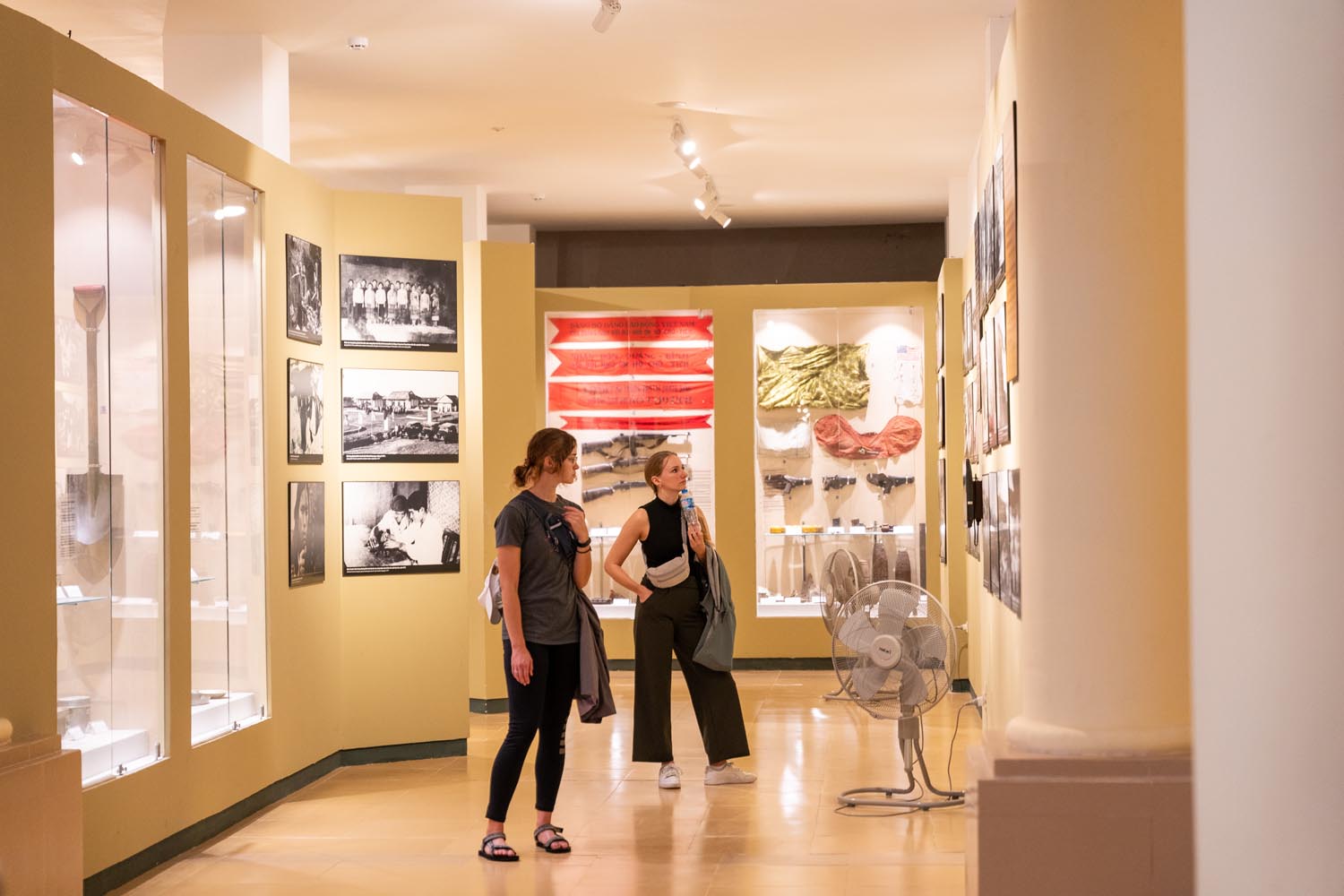
Tips for visiting Quang Binh Museum
If you are planning to visit Quang Binh Museum, this will be an exciting experience. However, before starting your visit, consider and follow these important guidelines to ensure a smooth and enjoyable experience.
Do not touch the artifacts
Quang Binh Museum houses a unique collection of historical, cultural, and artistic artifacts from the region. To protect these valuable items, visitors should strictly follow the rule of not touching any artifacts. This helps preserve them so that future generations can also have the opportunity to see them.
Visit with a tour guide
If you want to gain deeper insights into the artifacts and the stories behind them, consider visiting the museum with a tour guide. They have extensive knowledge of the museum and can share fascinating information about the history and art of Quang Binh.
Choose a thematic tour
Quang Binh Museum is not just a place to display artifacts but also a treasure trove of unique history and culture. You can personalize your experience by choosing a thematic tour, such as exploring history, art, folklore, or even modern aspects of this region. This helps you connect more deeply with the topics that interest you the most.
Contact information
- Phone number: 093 497 94 29
- Email: [email protected]
- Facebook: Quang Binh Museum
FAQs
Does the museum provide guided tours?
The museum has a team of tour guides who introduce visitors to the stories, historical events, and significance of the artifacts and collections on display.
Does the museum have regular exhibitions or special events?
On special occasions such as National Day (September 2), Reunification Day (April 30), and President Ho Chi Minh’s birthday (May 19), the museum organizes several exhibitions, including:
- Following the Footsteps of General Vo Nguyen Giap
- Propaganda Poster Exhibition: Young Generation Following Uncle Ho’s Steps
- Photo and Book Exhibition: 80 Years of the Vietnamese Cultural Outline
If you wish to attend these exhibitions, you can contact the museum in advance to check the schedule.
Are there any regulations on photography and video recording in the museum?
Visitors are allowed to take photos and videos; however, touching the artifacts is strictly prohibited.
Are the artifacts arranged into specific themes?
The museum displays over 15,000 artifacts, documents, and materials related to Quang Binh’s history, culture, and arts from prehistoric times to the present. The exhibits are categorized into 7 main themes:
- Nature and Natural Resources of Quang Binh
- Ethnic Cultures of Quang Binh
- Quang Binh in Prehistoric and Champa Cultures
- Quang Binh from the 11th Century to 1945
- Quang Binh during the Anti-French War (1945–1954)
- Quang Binh during the Anti-American War (July 1954 – May 1975)
- Quang Binh during the Development and Renewal of Socialism
What are the museum’s opening hours?
Quang Binh Museum is open daily, including holidays:
- Morning: 8:00 AM – 11:00 AM
- Afternoon: 1:30 PM – 4:30 PM
Is there an entrance fee? Are there discounts for children or the elderly?
Quang Binh Museum offers free entry.
What are the must-see artifacts in the museum?
Quang Binh Museum holds over 15,000 artifacts, including several historically, culturally, and scientifically significant items. Some notable ones include:
- Artifacts from the Bau Tro period
- Artifacts from the Dong Son period
- Artifacts reflecting ancient resistance against foreign invaders
- Collection of ceramic, terracotta, and porcelain items
- Collection of ancient coins
- Collection of historical weapons
- Collection related to the Can Vuong Movement
- The Seal of the Governor
- Artifacts depicting the resistance wars against the French and Americans
- The tractor from President Ho Chi Minh to Dai Phong Cooperative (Le Thuy District)
Does the museum have a souvenir shop?
Currently, Quang Binh Museum does not have a souvenir shop.



